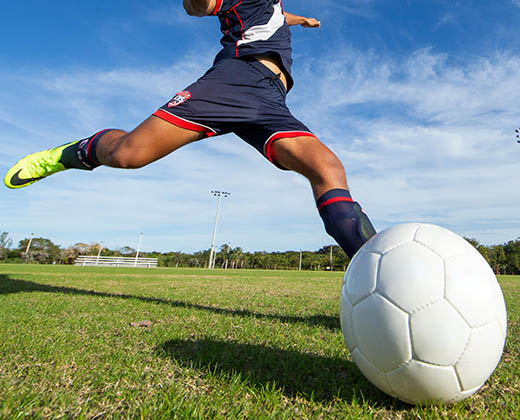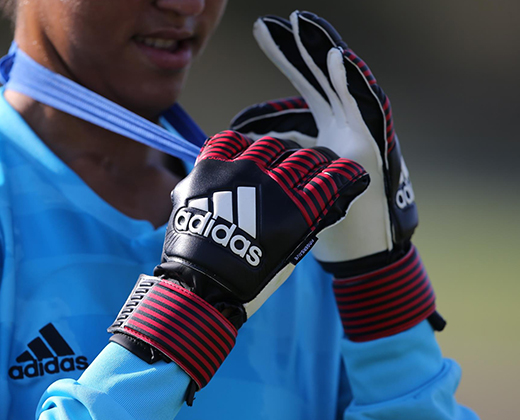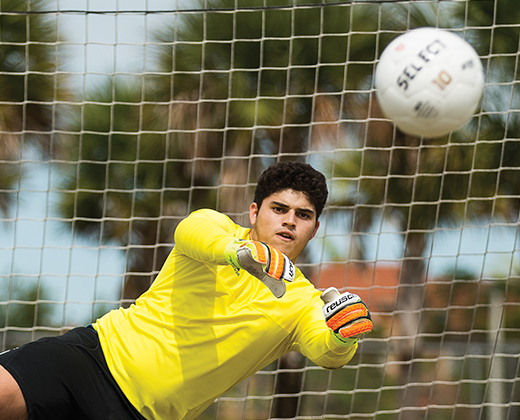Soccer Goalkeeper Tips: How to Make a Diving Save
Learn how to stretch out and make a diving save to help preserve the match with these Pro Tips.
Goalkeepers are tasked with making a variety of saves. Some saves are demanding, requiring you to catch the ball and hang on. Others may just involve a poke away with your fingertips. As a soccer goalkeeper, you may also face opposition that forces you to make a diving save.
There’s a technique to making a successful diving goalkeeper save. When you’re diving, you’re putting yourself in a position to make contact with the ground. According to Division I goalkeeper coach Erik Eisenhut, practicing a diving save means working on how to launch, how to land and how to keep control of the ball.
“Diving saves can help extend your goalkeeping range and lessen offensive goal-scoring opportunities for your opponent,” Eisenhut says.
ESTABLISH A SET POSITION
Before you think about launching for the ball, you must establish your set position. To get in the set position, bend your knees and shift your weight onto the balls of your feet. Avoid putting your weight entirely on your heels.
Then, lean forward and keep your eyes on the ball. Your hands should be in front of your body in a neutral position, out and extended. Your palms should face each other, ready to catch the ball.
THE POWER STEP
The power step is what Eisenhut calls the foundation of a solid diving save.
“This is when you dive into the ball’s intended path,” Eisenhut says. “If the ball is heading toward the left post, step with your left foot. Right post, right foot. Your power step helps with your launch and getting airborne.”
Remember the fundamentals of the set position, and keep your weight on the balls of your feet. Furthermore, remember to stay agile. Goalkeepers should never be in a stationary position.
When launching for a save, press off with your power foot and focus on pushing off the side of that foot. Then, spring into the air with your arms extended toward the ball. Eisenhut reminds goalkeepers to always lead with their hands. “The further you can extend your arms and fingers, the more likely you are to catch the ball, with your hands positioned around the ball,” he says.
Remember to lead with your hands. Match your body with the height of the ball, too. Be aware of your surroundings and where the ball is heading. If the ball is struck toward the low corners, be sure to quickly get low and over to the post. Eisenhut says that when getting low you should position your chest over your diving knee and have both arms extended toward the ball.
“If the ball is heading toward the crossbar, be sure to spring high in the air to make the save,” Eisenhut explains.
HOW TO LAND
The final sequence when making a diving save is the landing. First and foremost, Eisenhut says to plant the ball on the ground. Then, you will use your body and hands to shield the ball from oncoming attackers.
“Ease your body toward the ball with one hand on top, one hand around the backside of the ball and [using] the ground as your third hand to properly secure the ball. Keep hold of the ball through your landing,” he says.
If there is a commotion of players inside the box, be sure to let the area clear out before getting up. This can help avoid losing possession of the ball.
Training to improve fundamentals is crucial for any goalkeeper. Looking for more ways to help improve your goalkeeper skills? Follow these Pro Tips from Eisenhut on when to come off your line.








